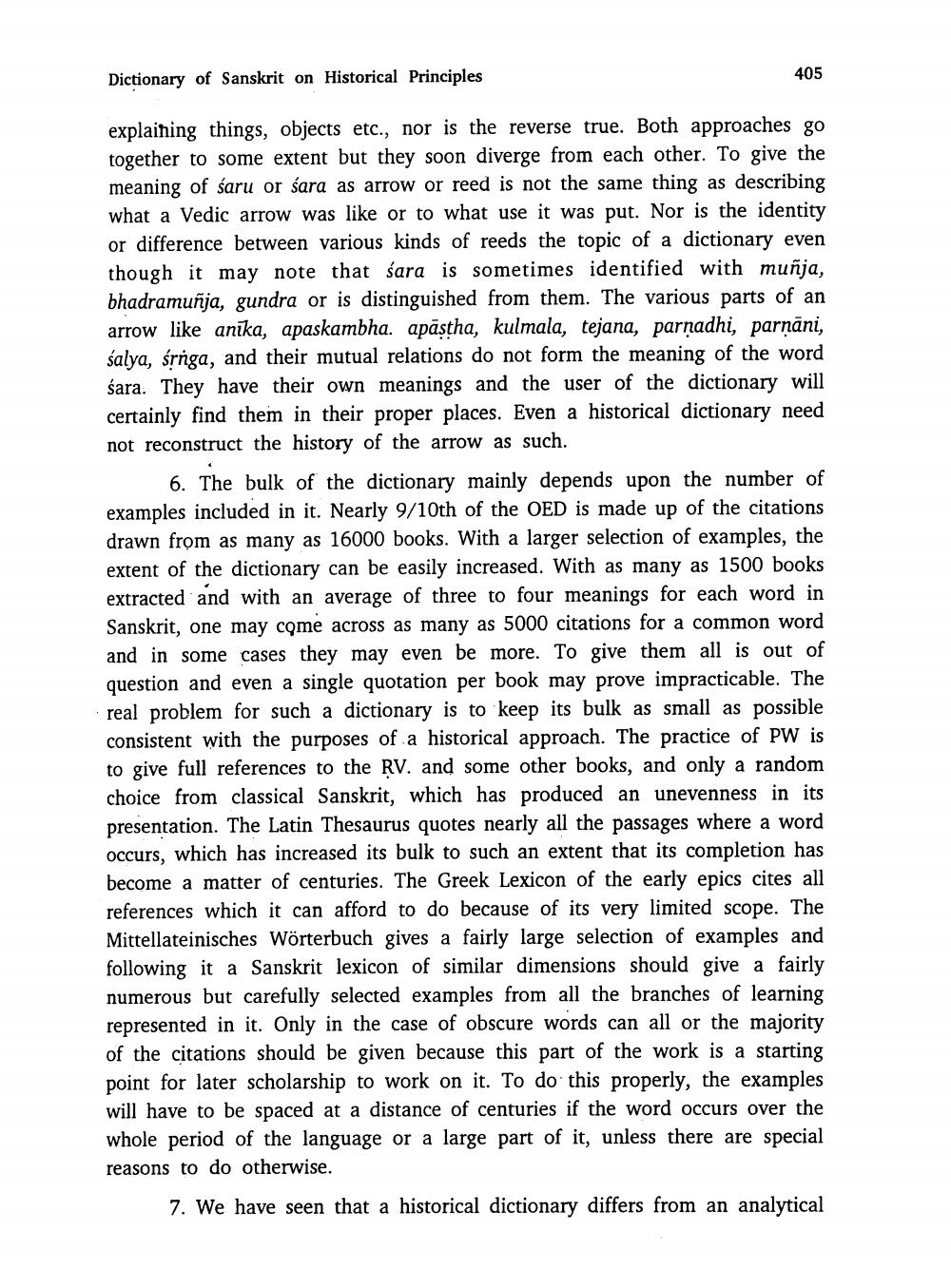________________
405
Dictionary of Sanskrit on Historical Principles
explaining things, objects etc., nor is the reverse true. Both approaches go together to some extent but they soon diverge from each other. To give the meaning of saru or sara as arrow or reed is not the same thing as describing what a Vedic arrow was like or to what use it was put. Nor is the identity or difference between various kinds of reeds the topic of a dictionary event though it may note that sara is sometimes identified with muñja, bhadramuñja, gundra or is distinguished from them. The various parts of an arrow like anika, apaskambha. apāstha, kulmala, tejana, parṇadhi, parnäni, salya, śrniga, and their mutual relations do not form the meaning of the word sara. They have their own meanings and the user of the dictionary will certainly find them in their proper places. Even a historical dictionary need not reconstruct the history of the arrow as such.
6. The bulk of the dictionary mainly depends upon the number of examples included in it. Nearly 9/10th of the OED is made up of the citations drawn from as many as 16000 books. With a larger selection of examples, the extent of the dictionary can be easily increased. With as many as 1500 books. extracted and with an average of three to four meanings for each word in Sanskrit, one may come across as many as 5000 citations for a common word and in some cases they may even be more. To give them all is out of question and even a single quotation per book may prove impracticable. The real problem for such a dictionary is to keep its bulk as small as possible consistent with the purposes of a historical approach. The practice of PW is to give full references to the RV. and some other books, and only a random choice from classical Sanskrit, which has produced an unevenness in its presentation. The Latin Thesaurus quotes nearly all the passages where a word occurs, which has increased its bulk to such an extent that its completion has become a matter of centuries. The Greek Lexicon of the early epics cites all references which it can afford to do because of its very limited scope. The Mittellateinisches Wörterbuch gives a fairly large selection of examples and following it a Sanskrit lexicon of similar dimensions should give a fairly numerous but carefully selected examples from all the branches of learning. represented in it. Only in the case of obscure words can all or the majority. of the citations should be given because this part of the work is a starting point for later scholarship to work on it. To do this properly, the examples. will have to be spaced at a distance of centuries if the word occurs over the whole period of the language or a large part of it, unless there are special reasons to do otherwise.
7. We have seen that a historical dictionary differs from an analytical




